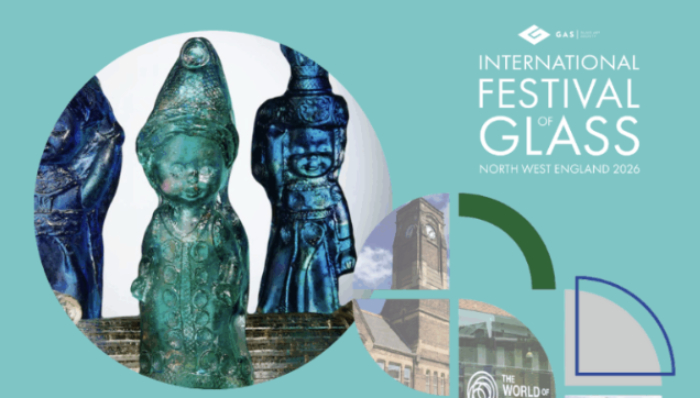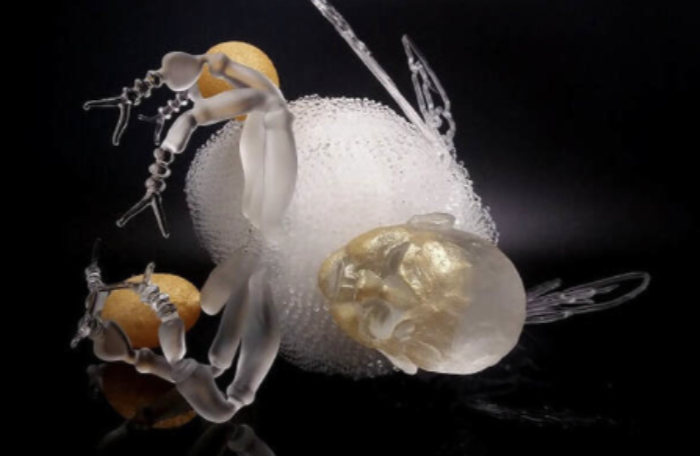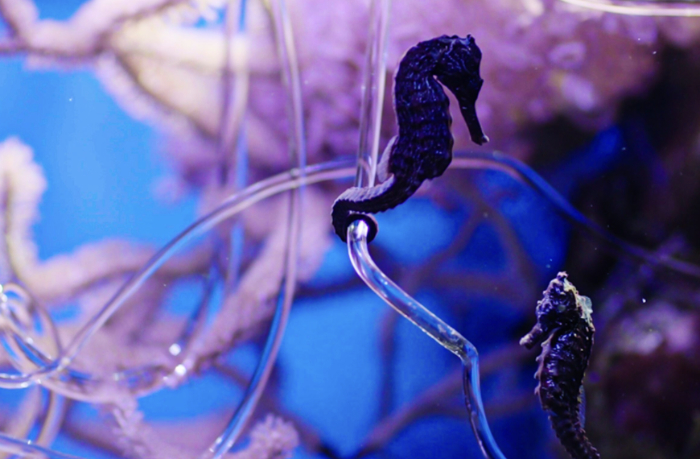
Fungi and glass exhibition, plus rebranding, at Glasmuseet Ebeltoft
Denmark’s Glasmuseet Ebeltoft will launch a major solo exhibition, ‘Evolutions’, featuring work co-created with nature, this April. The works have been developed by the Danish-Australian artist duo, Mikkel Dahlin Bojesen and Rhoda Ting, of Studio ThinkingHand.
The ‘Evolutions’ works explore methods of co-creating with other creatures, such as fungi, bacteria, ecosystems and synthetic life. In recent years, glass has played a more significant role in their practice as a material through which nature can be viewed and explored – as containers for living mushrooms and carriers of futuristic life forms, as alternative habitats for marine species and as prisms for looking back in time to the development of the planet.
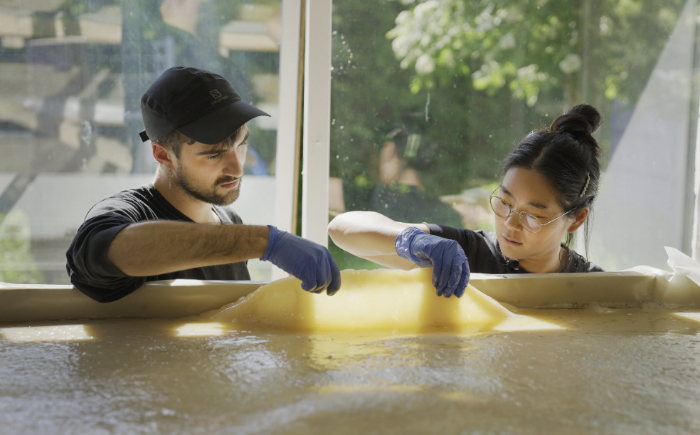
“Our practice starts with a deep fascination with nature’s diversity and complexity,” they state. “We revolve around questions such as: What can we learn from the way fungi reproduce? Is plastic a species of rock? Are our actions actually controlled by bacterial flora? Is the internet a fungus? How do we learn to co-create with nature as intelligence? Can the microbes help us to create new social structures?
“Our works are thus a series of investigations showing how we, as a species, shape new horizons for a future we have only just begun to imagine.”
‘Evolutions’ includes several new works, created in close collaboration with the museum’s glass studio. These include the installation ‘Deep Time’, consisting of a series of glass columns embedded with 12,000-year-old organic material from the seabed in the Arctic, and ‘Habitats’, which investigates how seahorses and other species interact with human-made environments in glass. This was a collaborative project with marine biologists from the Kattegat Centre in Grenaa, Denmark.
The exhibition also includes fungi from Novozymes, which the artists grew in petri dishes, live algae, ‘soft robots’ and glass brains with growing microorganisms.
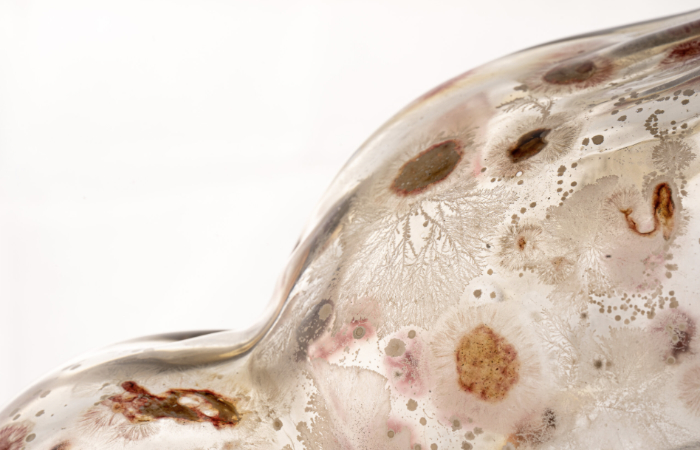
The exhibition title is also appropriate to mark an evolution in the Glasmuseet Ebeltoft itself, which is launching an ambitious, strategic development plan to carry it into the future, spearheaded by museum director Mikkel Hammer Elming.
Among its many ambitions, the museum will develop the international glass art scene, create sustainable museum practices and glass production methods, collaborate with artists in new ways, introduce glass to new artists, create a bridge between glass art and contemporary art, digitise the museum’s collection, create a wildlife garden, plus contribute to developing Ebeltoft’s cultural life and public spaces.
As a starting point, the museum will be rebranded, with a change of name to be revealed in April 2023. Mikkel states, “We are sharpening the museum’s profile. We are already among the most significant museums in the world within contemporary glass art. We are now creating the platform to develop one of the most interesting art museums in Denmark. With the changes that will soon be announced, we are laying the foundations for developing the museum further. There are many dreams for the museum, and Studio ThinkingHand’s upcoming exhibition will be a perfect example of how we want to explore glass as an artistic material in the future.”
‘Evolutions’ will be shown in the museum’s modern wing and on the ground floor of the old building. It will be open to the public from 29 April 2023 to 7 January 2024. The exhibition is supported by Aage og Johanne Louis-Hansens Fond, Augustinus Fonden, Axel Muusfeldts Fond, CAC Fonden, Det Obelske Familiefond, Knud Højgaards Fond and Statens Kunstfond.
Glasmuseet Ebeltoft is an international museum of glass art. With over 1,600 works from over 40 countries, it holds Denmark’s largest collection of contemporary glass art. It opened in 1986 in Ebeltoft’s former customs house. In 2006, it expanded with a modern extension and glass studio. Find out more via the website.
Main image: Still of seahorses interacting with glass from the video ‘Habitats’ by Studio ThinkingHand.
